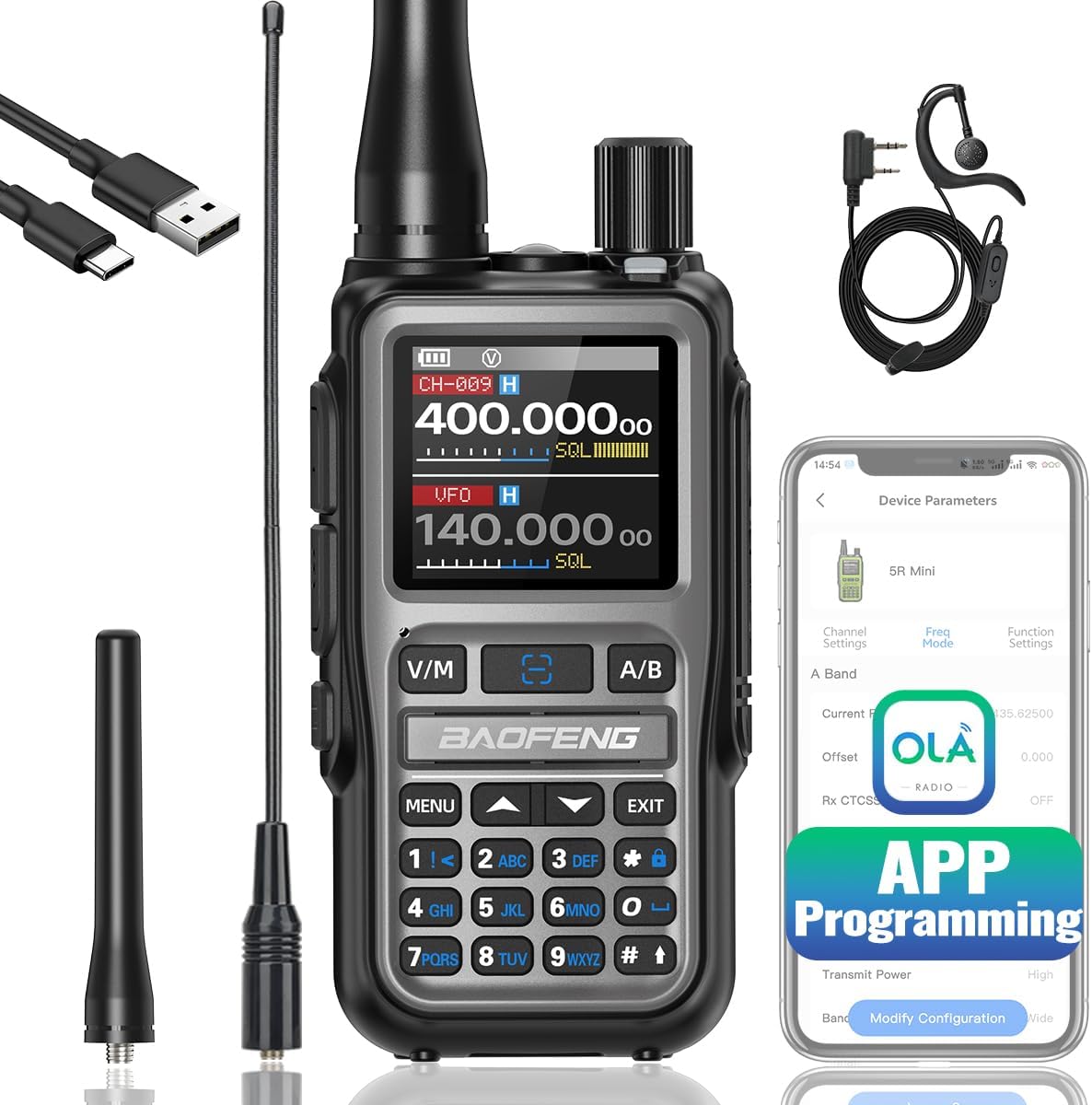
The AnyTone AT-5888UV Dual Band Mobile Transceiver is a versatile VHF/UHF mobile radio designed for both amateur radio operators and those who need a reliable communication tool in their vehicles. It offers a solid combination of transmitting power, wide frequency coverage, and a range of customizable features, making it a popular choice among ham radio enthusiasts who need dependable mobile operation.
Build Quality and Design
At first glance, the AT-5888UV has a professional, rugged design suited for in-vehicle installation. The radio body feels sturdy, with a cooling system that ensures reliable operation even during extended use. Its display is large, backlit, and easy to read in both daylight and nighttime conditions, providing clear visibility of frequency, channel, and other key information. The detachable faceplate adds flexibility, allowing the user to mount the control panel separately for better convenience in compact vehicle interiors.
The buttons and knobs are well-arranged and responsive, giving the operator quick access to essential functions. The microphone is equipped with its own keypad, which allows direct frequency entry and channel navigation without needing to touch the main unit. This is especially helpful when driving, as it keeps operation intuitive and efficient.
Frequency Coverage and Power Output
The AT-5888UV covers both VHF and UHF bands, offering wide frequency coverage to suit a variety of communication needs. On the VHF side, it handles typical amateur frequencies, while on UHF it provides excellent range for local repeaters and short-to-mid-distance communications. Its transmission power is impressive, delivering up to 50 watts on VHF and 40 watts on UHF, giving users strong output to reach distant repeaters or maintain clear simplex communication.
This level of power is ideal for mobile use, especially in rural or hilly areas where terrain can obstruct weaker signals. The adjustable power settings allow the user to scale down transmission when full power is not necessary, conserving energy and reducing heat buildup.
Audio Quality
One of the standout features of the AT-5888UV is its excellent audio performance. The built-in speaker delivers loud, clear audio that can easily be heard even in noisy vehicle environments. Users also have the option of connecting an external speaker for improved clarity if desired. Transmit audio is equally impressive, producing natural, crisp voice quality that ensures the operator is easily understood on the other end.
Features and Functions
The AT-5888UV comes loaded with features that make it a flexible and user-friendly mobile transceiver. Dual-band, dual-display, and dual-receive functionality allow monitoring of two frequencies simultaneously. This is particularly useful for operators who want to keep track of both local repeaters and a simplex frequency at the same time.
Additional features include:
-
A large memory capacity for storing channels and settings.
-
Multiple scanning modes for efficiently searching active frequencies.
-
Cross-band repeat functionality, which can be a valuable tool in emergency or field operations.
-
Programmable function keys, allowing users to tailor the radio to their specific preferences.
The programming of the radio can be handled either manually or through computer software, with the latter offering more convenience for managing large amounts of channel data.
Vehicle Installation and Use
Installing the AT-5888UV in a vehicle is straightforward, thanks to its compact design and detachable control head. The separation capability allows flexible mounting options, making it suitable for both small cars and larger vehicles. The cooling fan activates automatically during high-power transmissions to prevent overheating, ensuring long-term reliability.
During operation, the radio’s interface is intuitive. The combination of physical buttons, rotary knobs, and microphone controls makes it easy to adjust settings while on the move. The large, bright display provides immediate feedback on the chosen frequencies, power levels, and operating modes.
Performance in the Field
In actual use, the AT-5888UV performs consistently well. Its high output power ensures reliable connections even with distant repeaters, and reception is sensitive enough to pick up weak signals. Operators report stable performance without frequent signal dropouts, making it a dependable choice for both casual conversations and emergency communications.
The dual-receive function allows for seamless monitoring of multiple frequencies, which is highly practical during events, club activities, or while coordinating with groups across different bands. The cross-band repeat function also extends the utility of handheld radios, enabling users to boost communication coverage from portable units.
Final Thoughts
The AnyTone AT-5888UV Dual Band Mobile Transceiver is a feature-rich, powerful, and reliable mobile radio suited for amateur radio operators who want flexibility and robust performance in their vehicles. With strong output power, excellent audio quality, dual-receive capability, and convenient installation options, it offers a high level of functionality at a competitive value.
Whether for everyday mobile operation, long-distance repeater work, or emergency preparedness, the AT-5888UV stands out as a dependable and versatile choice for those who take communication seriously.






